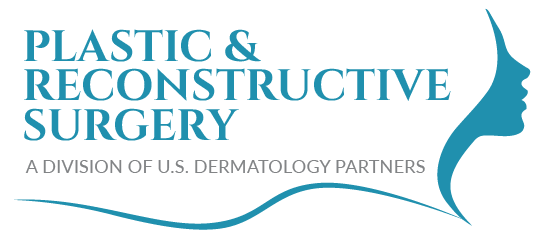Deep Plane Facelift
A facelift (rhytidectomy) is one of the most well-known facial rejuvenation procedures, and it is also one of the most popular cosmetic procedures in general. The deep plane facelift is an innovation of this popular procedure that delivers more natural-looking and longer-lasting facelift results through the repositioning of deeper face tissues. At Plastic & Reconstructive Surgery – a division of U.S. Dermatology Partners, our skilled cosmetic surgeons offer many of the latest procedures, including deep plane facelifts. You can learn more on this page or contact our cosmetic surgery team to schedule a consultation.
What Is a Deep Plane Facelift Procedure?
As part of the aging process, skin becomes lax and may appear loose, saggy, or crepey. Facelifts are designed to improve the appearance of skin tightness and smoothness to combat these effects of aging. The traditional facelift focuses on lifting just the skin to provide a taught facial appearance. This could leave skin looking and feeling inflexible and unnatural in some cases. There are advanced procedures referred to as SMAS facelifts that reposition the superficial musculature and skin. The results of this procedure were much more natural-looking, but they didn’t offer much longevity because the deeper musculature and soft tissue were still lax. The deep plane facelift procedure goes even deeper readjusting the ligaments and other attachments deep within the facial structure.
Benefits of Deep Plane Facelifts
Every cosmetic surgeon has a different approach and each person’s needs are different. However, there are many reasons why cosmetic surgeons may prefer this procedure and recommend you as a candidate for a deep plane facelift, including:
- Longitudinal studies and research are still ongoing but early indications suggest that the deep plane facelift procedure may deliver longer-lasting results compared with other forms of facelifts.
- More natural-looking results may be possible since deeper structures can be repositioned during the deep plane facelift. This reduces the risk of skin looking pulled or unnaturally taught since the deeper structures match the appearance of the smoothed skin tissues.
- A greater ability to remodel facial structures with more precision means the surgeon is able to achieve a more dramatic change. This includes repositioning fat stores in the cheeks for a generally more lifted appearance.
Recovery After the Deep Plane Facelift Procedure
Like any surgical procedure, deep plane facelifts do require recovery time. As you heal following treatment, you may notice skin tightening, numbness, bruising, and swelling. These side effects should begin to diminish within the first week after your deep plane facelift and continue to resolve over the next 2-3 weeks. Our team will walk you through the recovery process and make sure you have everything you need. If you have any concerns or questions throughout the process, please contact your surgeon to follow up.
Other Considerations
In many cases, a deep plane facelift works best when combined with other treatments. For instance, after a deep plane facelift, there may be some areas that are not directly addressed with this surgery. Specifically, laser resurfacing may be used to address skin flaws, pigmentation, and acne scarring. Injectables may be recommended for a fuller lip or to smooth and reshape deep folds. Additionally, facelifts may be recommended in conjunction with a neck lift to smooth and tighten the skin of the neck and throat. The best way to learn more about is to schedule a facelift consultation at Plastic and Reconstructive Surgery.
Risks Associated with Deep Plane Facelifts
While there are risks associated with any procedure, the deep place facelift has not been shown to have any increased risks compared to other types of facelifts. The risks of any procedure will vary from patient to patient based on history and post-procedure care. Additional questions and concerns can be discussed in greater detail at a consultation to help you to feel comfortable.

